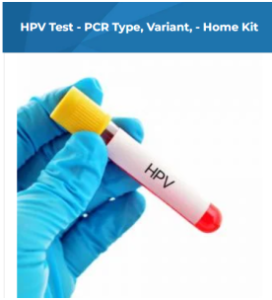You may have heard of the CA125 test if you’re a woman. This screening is vital for diagnosing and monitoring gynecological issues like ovarian cancer. In this guide, we’ll discuss this investigation and another essential tool for a woman’s reproductive health: the HPV test, in detail and provide the information you need to understand.
What is the CA125 Test?
The CA125 exam measures the level of a protein called cancer antigen 125 in the blood. Ovaries, fallopian tubes, and uterus lining cells produce this protein. Its level in the blood can increase in response to certain types of cancer, including ovarian cancer. However, high cancer antigen 125 other conditions, such as endometriosis, uterine fibroids, and PID, can also cause levels.

Reasons to Perform Cancer Antigen 125 Screening
The CA125 screening is most commonly used to monitor women diagnosed with ovarian cancer. It can also detect ovarian cancer in women with stomach pain and an eating disorder. However, the cancer antigen 125 screening is not the best tool to find ovarian cancer in the general population, as it can produce false positives and negatives.
The procedure of CA125 Tests. Is it Painful?
The CA125 screening is a simple blood investigation that can be performed in a doctor’s office or a laboratory. A doctor will insert a needle into a vein of your arm to collect a blood sample. When the healthcare worker inserts a needle into the arm of the patient, some people may experience mild discomfort or a slight pinch. But this discomfort will usually only last a few seconds.
The workers will transport the sample to a lab for analysis. The investigation is usually quick and does not involve any pain, and you can return to your normal activities immediately.
But after the sample is taken, there may be some mild bruising or soreness at the site where a needle was inserted, but this is usually temporary and subsides quickly. In rare cases, some people may experience more significant discomfort or bruising after the investigation and should contact their doctor if they have concerns.
What is the HPV Investigation?
This examination detects the presence of human papillomavirus in the cervix. A common STI, human papillomavirus, can lead to various cancer such as cervix, vaginal and anal cancer. There are many different strains of human papillomavirus, some of which are high-risk and some low-risk.

Reasons for Performing Human Papilloma virus Investigation
The HPV screening is typically performed with a Pap investigation (a Pap smear) to screen for cervical cancer. Pap screening involves collecting cells from the cervix and monitoring them under a microscope.
Your doctor may recommend extra monitoring if this screening detects the presence of high-risk strains of human papillomavirus. Those extra screenings include a colposcopy (a procedure in which a healthcare provider examines the cervix with a unique instrument).
The procedure of HPV Test. Is this a Painful Procedure?
The screening for HPV infection is performed in the same way as the Pap investigation. A healthcare provider will insert a speculum into your vagina to hold it open and collect a sample of cells from your cervix using a small brush or spatula. Then send it to a lab for further analysis.
The HPV test ispainless and takes only a few minutes to complete. While the screening for this infection is generally not painful, some women may experience mild pressure during the procedure.
What to Expect After These Screenings?
After these exams, you may experience some mild discomfort or bruising at the site where the blood was drawn or the sample was collected. This discomfort is normal and should go away within a day or two. Your doctor will inform you of the screening results, and if any further investigation or treatment is necessary, they will discuss your options with you.
Is there any Relation between the Two Exams?
Both are essential tools for monitoring gynecological health issues in women, although their uses differ. Doctors can provide a more detailed picture of a woman’s health by using these investigations together. By using this information, he/she can take appropriate steps to diagnose and treat any conditions that may be present.
Regular screening is essential for early finding and prevention of health issues. Women should speak to their doctors about the appropriate screening schedule for their needs.
Firstly, it’s essential to understand that both screenings are non-invasive. CA125 test is a simple blood screening that measures the level of cancer antigen 125 in the blood. In contrast, human papillomavirus screening involves collecting cells from the cervix and monitoring them under a microscope.
In addition, both screenings can produce false positives and false negatives. For example, if the cancer antigen 125 levels are higher, uterine fibroids and PID can also be the reasons. A higher value of this protein does not always symbolize ovarian cancer. Similarly, the human papillomavirus exam may produce false positives or negatives; further monitoring may be necessary to confirm a diagnosis.
Conclusion
In conclusion, the screening is essential tools that are crucial in monitoring women’s gynecological health issues. Both screenings are non-invasive. While both work to detect different conditions, they can still work together to give a good picture of a woman’s health.
Regular screening is necessary for early findings and stopping health issues, and women should speak to their doctor about the appropriate monitoring schedule for their individual needs. For women aged 21-65 years, an HPV test is typically for them. In contrast, for women who are suffering from ovarian cancer, there is a chance that their doctor will recommend a CA125 test for further monitoring. A family history of the disease can also be a reason for doing this investigation.
Furthermore, both screenings are an important part of health screening. Regular screening is vital for the early finding and prevention of health issues. Women should speak to their doctors about their individual monitoring needs.

